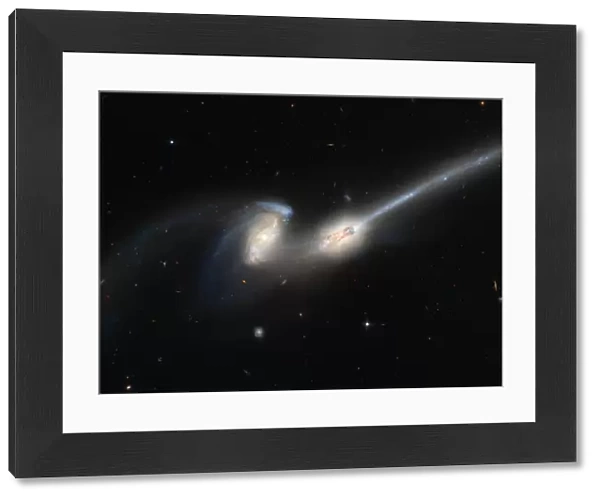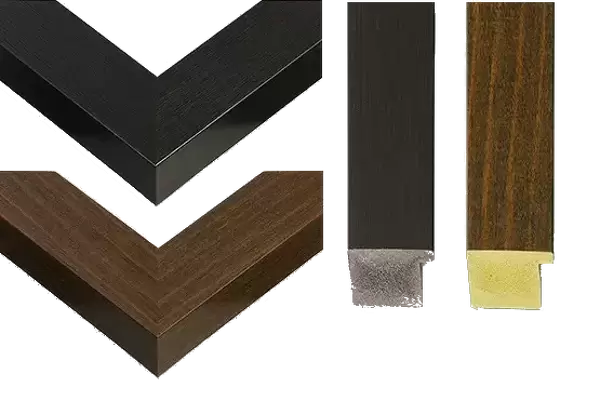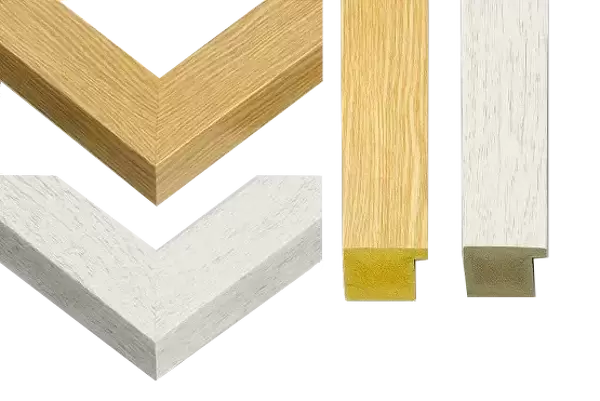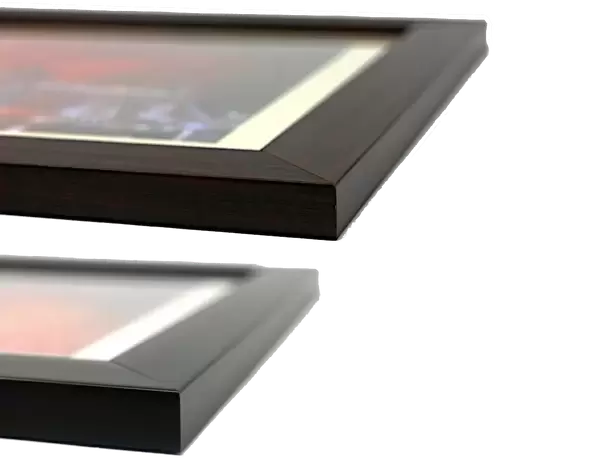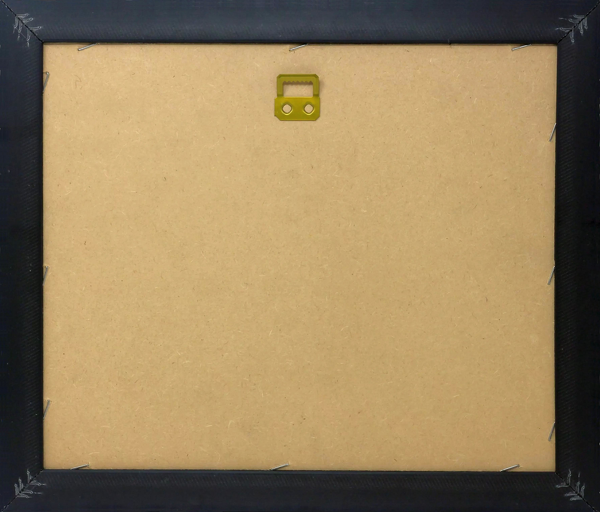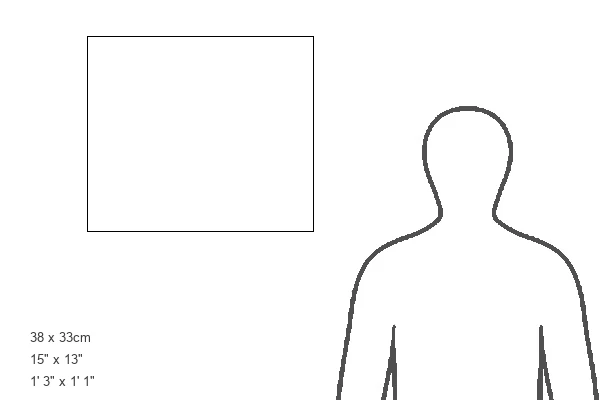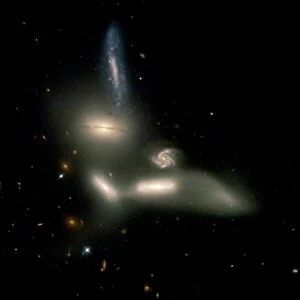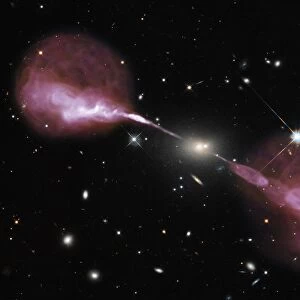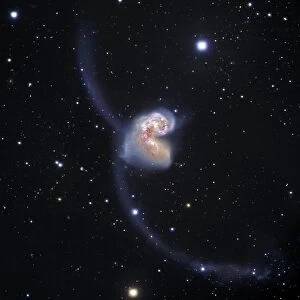Framed Print : Mice colliding galaxies
![]()

Framed Photos from Science Photo Library
Mice colliding galaxies
The Mice colliding galaxies, optical image taken by the Hubble Space Telescopes new Advanced Camera for Surveys (ACS) on April 7th 2002. These galaxies (NGC 4676) were once spiral in shape, but the gravitational interaction has thrown off long tails of stars and distorted their nuclei (yellow). It has also caused a burst of star formation activity, as seen by the abundance of hot young blue stars. The galaxies will combine to form one large elliptical galaxy in several million years time. The Mice are around 300 million light years from Earth in the constellation Coma Berenices
Science Photo Library features Science and Medical images including photos and illustrations
Media ID 6443937
© NASA/ESA/STSCI/H.FORD, JHU/SCIENCE PHOTO LIBRARY
Advanced Camera For Surveys Astrophysics Colliding Collision Cosmology Distorted Distortion Galactic Galaxies Galaxy Hubble Space Telescope Interacting Interaction Optical Tail Tails Universe Coma Berenices
14"x12" (38x32cm) Modern Frame
Beautify your home or office with the stunning 'Mice Colliding Galaxies' framed print from Media Storehouse. This captivating image, captured by the Hubble Space Telescope's Advanced Camera for Surveys on April 7th, 2002, showcases the mesmerizing collision of two galaxies, NGC 4676A and NGC 4676B, also known as 'The Mice.' This optical image, sourced from Science Photo Library, is a breathtaking testament to the wonders of the universe. Each print is expertly framed and ready to hang, making it an impressive addition to any space-inspired decor. Bring the beauty of the cosmos into your living environment with this unique and intriguing piece.
Wood effect frame, card mounted, 10x8 archival quality photo print. Overall outside dimensions 14x12 inches (38x32cm). Environmentally and ozone friendly, 40mm wide x 15mm Polycore® moulding has the look of real wood, is durable and light and easy to hang. Biodegradable and made with non-chlorinated gases (no toxic fumes) it is efficient; producing 100 tons of polystyrene can save 300 tons of trees! Prints are glazed with lightweight, shatterproof, optical clarity acrylic (providing the same general protection from the environment as glass). The back is stapled hardboard with a sawtooth hanger attached. Note: To minimise original artwork cropping, for optimum layout, and to ensure print is secure, the visible print may be marginally smaller
Contemporary Framed and Mounted Prints - Professionally Made and Ready to Hang
Estimated Image Size (if not cropped) is 24.4cm x 18.3cm (9.6" x 7.2")
Estimated Product Size is 37.6cm x 32.5cm (14.8" x 12.8")
These are individually made so all sizes are approximate
Artwork printed orientated as per the preview above, with landscape (horizontal) orientation to match the source image.
EDITORS COMMENTS
This breathtaking print captures the mesmerizing sight of the Mice colliding galaxies, a celestial event that occurred approximately 300 million light years away from Earth in the constellation Coma Berenices. Taken by the Hubble Space Telescope's Advanced Camera for Surveys on April 7th, 2002, this optical image showcases the remarkable aftermath of gravitational interaction between two once-spiral shaped galaxies known as NGC 4676. The intense gravitational forces at play have caused these galaxies to lose their original form and instead display long tails of stars stretching outwards. The nuclei of these galactic bodies appear distorted in a striking yellow hue. Additionally, this collision has triggered an explosion of star formation activity within them, evident through the abundance of hot young blue stars scattered throughout. As time progresses over several million years, these colliding galaxies will eventually merge into one large elliptical galaxy. This photograph serves as a testament to both the destructive and transformative power found within our vast universe. Captured with precision by Science Photo Library's expertise in space photography, this image offers us a glimpse into the wonders of cosmology and astrophysics. It reminds us just how small we are in comparison to the grandeur and complexity present beyond our own planet Earth.
MADE IN THE UK
Safe Shipping with 30 Day Money Back Guarantee
FREE PERSONALISATION*
We are proud to offer a range of customisation features including Personalised Captions, Color Filters and Picture Zoom Tools
SECURE PAYMENTS
We happily accept a wide range of payment options so you can pay for the things you need in the way that is most convenient for you
* Options may vary by product and licensing agreement. Zoomed Pictures can be adjusted in the Basket.

